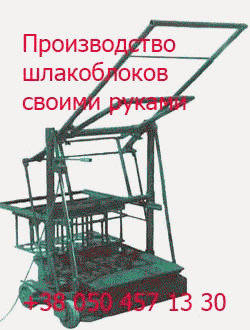1.2.2.1 General Methods Sampling with a suitable device (beaker, sampling scoop) is applicable for solid materials, especially pigments, fillers, and resins in powder, granular, or lump form. For standards, see Table 1.1 (“Sampling”). Standard climates are constant artificial climatic conditions with a defined temperature and humidity and limited ranges of air pressure and flow velocity. […]
Архивы рубрики ‘Industrial Inorganic Pigments’
Particle Size
 22 августа, 2015
22 августа, 2015  Pokraskin
Pokraskin The important physical data for inorganic pigments comprise not only optical constants, but also geometric data: mean particle size, particle size distribution, and particle shape [1.12]. The standards used for the terms that are used in this section are listed in Table 1.1 (“Particle size analysis”). The concept of particles and particle shape corresponds to […]
Crystallography and Spectra
 22 августа, 2015
22 августа, 2015  Pokraskin
Pokraskin The following are the most common crystal classes: 1. Cubic: zinc blend lattice (e. g., precipitated CdS), spinel lattice (e. g., Fe3O4, CoAl2O4) 2. Tetragonal: rutile lattice (e. g., TiO2, SnO2) 3. Rhombic: goethite lattice (e. g., a-FeOOH) 4. Hexagonal: corundum lattice (e. g., a-Fe2O3, a-Cr2O3) 5. Monoclinic: monazite lattice (e. g., PbCrO4) In ideal […]
Analysis
 22 августа, 2015
22 августа, 2015  Pokraskin
Pokraskin The industrial synthesis of inorganic pigments is strictly controlled by qualitative and quantitative chemical analysis in modern, well-equipped physicochemical test laboratories. Quantitative chemical and X-ray analysis is carried out on raw materials, intermediates, and substances used for aftertreatment, but most importantly on the final products, byproducts, and waste products (wastewater and exhaust gas). This serves […]
Genera! Chemical and Physical Properties
 21 августа, 2015
21 августа, 2015  Pokraskin
Pokraskin 1.2.1 Fundamental Aspects [1.6] 1.2.1.1 Chemical Composition With few exceptions, inorganic pigments are oxides, sulfides, oxide hydroxides, silicates, sulfates, or carbonates (see Tables 1.3 and 1.4), and normally consist of singlecomponent particles (e. g., red iron oxide, a-Fe2O3 with well-defined crystal structures. However, mixed and substrate pigments consist of non-uniform or multicomponent particles. Mixed pigments […]
New Developments
 21 августа, 2015
21 августа, 2015  Pokraskin
Pokraskin Notwithstanding that most inorganic pigments have been known for a very long time, new developments appear on the catwalk of colors. The so-called “high performance pigments” [1.1] show a lot of modern developments. Driven by environmental laws, even some of the former important inorganic pigments have had to be replaced. For example, red lead was […]
Uses
 20 августа, 2015
20 августа, 2015  Pokraskin
Pokraskin The most important areas of use of pigments are paints, varnishes, plastics, artists’ colors, printing inks for paper and textiles, leather decoration, building materials (cement, renderings, concrete bricks and tiles, mostly based on iron oxide and chromium oxide pigments), imitation leather, floor coverings, rubber, paper, cosmetics, ceramic glazes, and enamels. The paint industry uses high-quality […]
EconomicAspects and Uses
 19 августа, 2015
19 августа, 2015  Pokraskin
Pokraskin 1.1.2.1 Economic Aspects World production of inorganic pigments in 2000 was ca. 5.9 x106 t. About one-third ofthis total is supplied by the United States, one-third by the European Community, and one-third by all the remaining countries. The German pigment industry supplied about 40% of the world consumption of inorganic colored pigments, including about 50% […]
Classification
 19 августа, 2015
19 августа, 2015  Pokraskin
Pokraskin Inorganic pigments can be classified from various points of view. The classification given in Table 1.2 (for standards see Table 1.1, “Coloring materials, terms”) follows a system recommended by ISO and DIN; it is based on coloristic and chemical considerations. Further methods for classification are shown in Section 1.2.1. As in many classification schemes, there […]
History
 19 августа, 2015
19 августа, 2015  Pokraskin
Pokraskin Natural inorganic pigments have been known since prehistoric times. Over 60,000 years ago, natural ocher was used in the Ice Age as a coloring material. The cave paintings of the Pleistocene peoples of southern France, northern Spain, and northern Africa were made with charcoal, ocher, manganese brown, and clays, and must have been produced over […]
 Опубликовано в рубрике
Опубликовано в рубрике 
